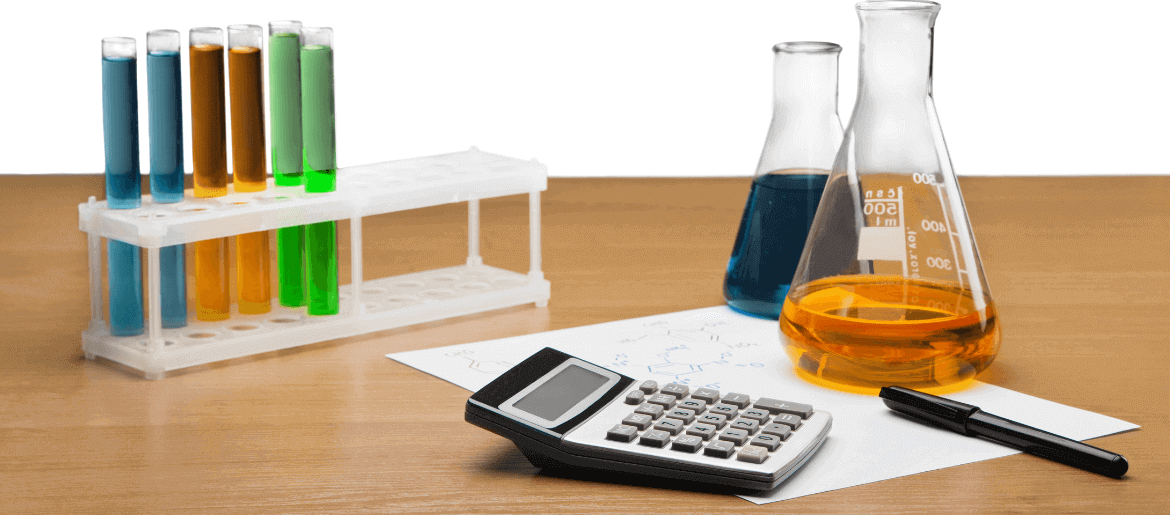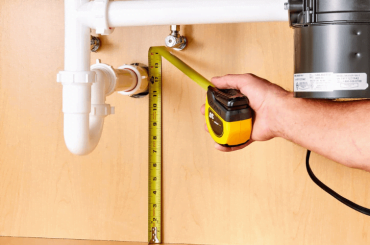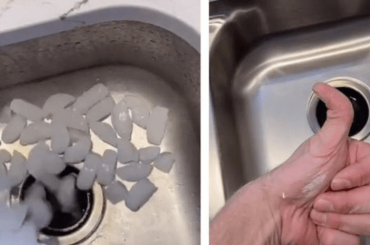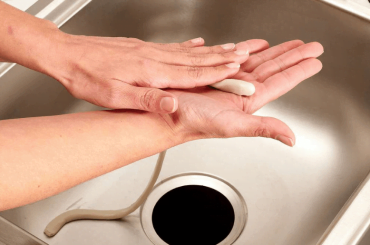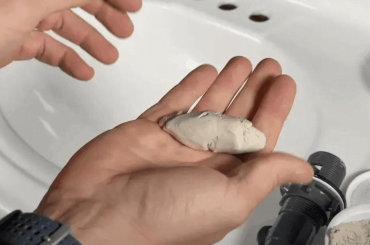Hydrochloric acid is a corrosive and dangerous compound that can cause significant damage if it comes into contact with your skin or eyes. So you must know how to deal with it safely.
In this blog post, we are going to take a look at how to neutralize hydrochloric acid. We will also discuss some of the dangers of this acid and how to protect yourself from it. Let’s get started!
How to neutralize hydrochloric acid?
There are many ways to neutralize hydrochloric acid. Some common methods include
- Adding a neutralizing agent: This will react with the hydrochloric acid to create a new compound that is less acidic. Neutralizing agents such as calcium carbonate will raise the pH of the solution and make it less corrosive.
- Using vinegar: Vinegar will act as an acid to neutralize the hydrochloric acid.
- By using baking soda: The baking soda will react with the hydrochloric acid to create a salt, which is less acidic.
- Using lemon juice: The lemon juice will act as an acid to neutralize the hydrochloric acid. Because lemon juice is a citrus fruit, it will also leave behind an acidic residue.
- By using soap: Soap can help to neutralize acids by forming a barrier between the acid and the surface it is attacking. This will prevent the acid from causing any further damage.
- By using milk: Milk can help to neutralize acids because it contains casein, which is a protein that binds to acids and neutralizes them. This will also create a barrier between the acid and the surface it is attacking, preventing further damage.
- Using a buffer solution: A buffer solution is a mixture of an acid and a base that can neutralize each other. This will help to maintain a stable pH level in the solution and prevent the acid from causing any damage.
- Use dilution: Finally, you can also use dilution to neutralize hydrochloric acid. This simply involves adding water to the acid, which will lower its concentration and make it less harmful.
These are some common methods to neutralize hydrochloric acid. Depending on what you have available, you can choose the best method for your needs.
How to Identify if hydrochloric acid has been spilled?
If you suspect that hydrochloric acid has been spilled, it is important to take quick action to minimize the risk of injury.
Here are some ways to identify a spill:
- Strong smell: Hydrochloric acid has a strong, sour smell. If you notice a sudden, intense smell, it could be a sign of a spill.
- Fizzing or bubbling: Hydrochloric acid can cause fizzing or bubbling when it comes into contact with certain materials, such as metals. This may be an indication of a spill.
- Discoloration: Hydrochloric acid can discolor surfaces it comes into contact with. If you notice any unusual discoloration, it could be a sign of a spill.
- Burning sensation: If you come into contact with hydrochloric acid, it can cause a burning sensation on your skin or in your throat. This is a sign that you should get away from the area and seek medical attention.
- Skin irritation: Hydrochloric acid can cause skin irritation. If you notice any redness, swelling or pain on your skin, it could be a sign of a spill.
- Difficulty in breathing: If you inhale spilled hydrochloric acid, it can cause difficulty in breathing. This is a sign that you should get to fresh air immediately and seek medical attention.
What are the dangers of hydrochloric acid and how can they be avoided?
There are a few dangers of hydrochloric acid:
- Hydrochloric acid is a corrosive substance that can cause serious damage to the skin, eyes, throat and lungs.
- If ingested, it can also lead to stomach ulcers and digestive problems.
- Inhaling hydrochloric acid fumes can irritate the respiratory tract and cause coughing and wheezing.
- Chronic exposure to hydrochloric acid may also increase the risk of cancer.
To avoid these dangers, it is important to handle hydrochloric acid carefully and follow these useful tips.
- Use proper safety gear when working with it.
- Always wear gloves, goggles, face masks and other protective clothing when handling the chemical.
- Be sure to work in a well-ventilated area to avoid inhaling its fumes.
- Store hydrochloric acid in a cool, dry place away from any heat sources or flames.
Precautions to take when neutralizing hydrochloric acid
- First, always add acid to water, never the reverse.
- Second, use appropriate personal protective equipment.
- Third, slowly add the acid to the water while stirring constantly.
- Fourth, once all of the acids have been neutralized, dispose of the solution properly.
- Fifth, neutralizing hydrochloric acid can produce toxic vapors, so it is important to work in a well-ventilated area.
- Finally, wash your hands thoroughly after completing the neutralization process.
FAQs – Neutralize Hydrochloric Acid
How do you neutralize hydrochloric acid on the skin?
If you come in contact with hydrochloric acid, immediately flush the area with water for at least 15 minutes.
If you have any remaining acid on your skin, neutralize it by applying a baking soda paste. To make the paste, mix equal parts baking soda and water.
Apply the paste to the affected area and leave it on for 15-20 minutes before rinsing it off.
You may need to neutralize the acid with a basic solution, such as milk of magnesia. If the skin is burned, you will need to seek medical attention immediately.
What happens if you mix hydrochloric acid with salt?
If you mix hydrochloric acid with salt, the resulting mixture will be quite corrosive. Hydrochloric acid will react with the salt to form chlorine gas, which is a highly corrosive material. If inhaled, it can cause burns to the lungs and throat and can even be fatal.
In addition, the mixture will generate a lot of heat, so it is advisable to wear gloves and eye protection when working with it.
What happens when you mix hydrochloric acid and vinegar?
When you mix hydrochloric acid and vinegar, the mixture creates a new substance called acetic acid. Acetic acid is a much weaker acid than hydrochloric acid, so it is not as corrosive.
However, it can still be dangerous if ingested or if it comes into contact with your skin or eyes.
What happens when hydrochloric acid reacts with water?
Hydrochloric acid is a strong acid and when it reacts with water it dissociates completely into its ions, H+ and Cl-.
When hydrochloric acid reacts with water, it forms a new substance called hydronium ions.
These ions are very unstable and quickly break down into hydrogen and chlorine atoms. The chlorine atoms then combine with the water molecules to form hydrochloric acid.
Can I use baking soda to neutralize the acid?
Yes, baking soda can be used to neutralize acids. Baking soda, also known as sodium bicarbonate.
When baking soda is added to an acid, it reacts with the acid to form carbon dioxide gas. This reaction can help to neutralize the acid and make it less dangerous.
However, you should always consult with a qualified professional before using any substance to neutralize acids.
Final Words
Hydrochloric acid is a dangerous chemical that can cause severe burns. It’s important to know how to neutralize it in the event of an accident. In this article, we’ve outlined different methods for doing so. There are several ways to neutralize hydrochloric acid depending on its concentration and pH level. But the most common way to neutralize acid is Baking soda (sodium bicarbonate) and other methods include using calcium or magnesium oxide. Remember to follow the instructions carefully and stay safe!

